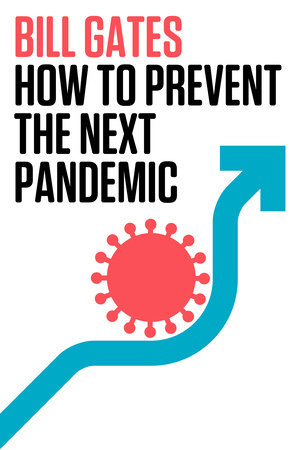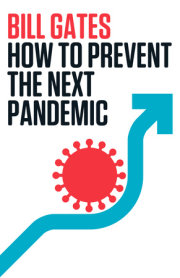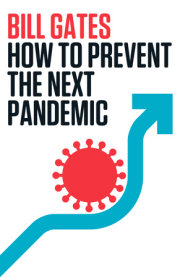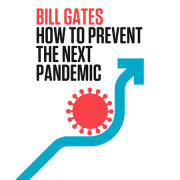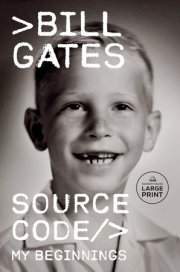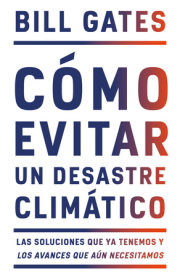Introduction
I was having dinner on on a Friday night in mid-February 2020 when I realized that COVID-19 would become a global disaster.
For several weeks, I had been talking with experts at the Gates Foundation about a new respiratory disease that was circulating in China and had just begun to spread elsewhere. We’re lucky to have a team of world-class people with decades of experience in tracking, treating, and preventing infectious diseases, and they were following COVID-19 closely. The virus had begun to emerge in Africa, and based on the foundation’s early assessment and requests from African governments, we had made some grants to help keep it from spreading further and to help other countries prepare in case it took off. Our thinking was as follows: We hope this virus won’t go global, but we have to assume it will until we know otherwise.
At that point, there was still reason to believe that the virus could be contained and wouldn’t become a pandemic. The Chinese government had taken unprecedented safety measures to lock down Wuhan, the city where the virus emerged—schools and public places were closed, and citizens were issued permission cards that allowed them to leave their homes every other day for thirty minutes at a time. And the virus was still limited enough that countries were letting people travel freely. I had flown to South Africa earlier in February for a charity tennis match.
When I got back from South Africa, I wanted to have an in-depth conversation about COVID-19 at the foundation. There was one central question I could not stop thinking about and wanted to explore at length: Could it? be contained, or would it go global?
I turned to a favorite tactic that I’ve been relying on for years: the working dinner. You don’t bother with an agenda; you simply invite a dozen or so smart people, provide the food and drinks, tee up a few questions, and let them start thinking out loud. I’ve had some of the best conversations of my working life with a fork in my hand and a napkin in my lap.
So a couple of days after returning from South Africa, I sent an email about scheduling something for the coming Friday night: “We could try and do a dinner with the people involved with coronavirus work to touch base.” Almost everyone was nice enough to say yes—despite the timing and their busy schedules—and that Friday, a dozen experts from the foundation and other organizations came to my office outside Seattle for dinner. Over short ribs and salads, we turned to that key question: Would COVID-19 turn into a pandemic?
As I learned that night, the numbers were not in humanity’s favor. Especially because COVID-19 spread through the air—making it more transmissible than, say, a virus that is spread through contact, like HIV or Ebola—there was little chance of containing it to a few countries. Within months, millions of people all over the world were going to contract this disease, and millions would die from it.
I was struck that governments weren’t more concerned about this looming disaster. I asked, “Why aren’t governments acting more urgently?”
One scientist on the team, a South African researcher named Keith Klugman, who came to our foundation from Emory University, simply said: “They should be.”
Infectious diseases—both the kind that turn into pandemics and the kind that don’t—are something of an obsession for me. Unlike the subjects of my previous books, software and climate change, deadly infectious diseases are not generally something that people want to think about. (COVID-19 is the exception that proves the rule.) I’ve had to learn to temper my enthusiasm for talking about AIDS treatments and a malaria vaccine at parties.
My passion for the subject goes back twenty-five years, to January 1997, when Melinda and I read an article in The New York Times by Nicholas Kristof. Nick reported that diarrhea was killing 3.1 million people every year, almost all of them children. We were shocked. Three million kids a year! How could that many children be dying from something that was, as far as we knew, little more than an uncomfortable inconvenience?
We learned that the simple lifesaving treatment for diarrhea—an inexpensive liquid that replaces the nutrients lost during an episode—wasn’t reaching millions of children. That seemed like a problem we could help with, and we started making grants to get the treatment out more broadly and to support work on a vaccine that would prevent diarrheal diseases in the first place.
I wanted to know more. I reached out to Dr. Bill Foege, one of the epidemiologists responsible for the eradication of smallpox and a former head of the Centers for Disease Control and Prevention. Bill gave me a stack of eighty-one textbooks and journal articles on smallpox, malaria, and public health in poor countries; I read them as fast as I could and asked for more. One of the most influential for me had a mundane title: World Development Report 1993: Investing in Health, Volume 1. My obsession with infectious diseases—and particularly with infectious diseases in low- and middle-income countries—had begun.
When you start reading up on infectious diseases, it isn’t long before you come to the subject of outbreaks, epidemics, and pandemics. There aren’t strict definitions for these terms. A good rule of thumb is that an outbreak is when a disease spreads locally, through a community or small region; an epidemic is when an outbreak goes national; and a pandemic is when an epidemic goes global, affecting more than one continent. And some diseases don’t come and go, but stay consistently in a specific location—those are known as endemic diseases. Malaria, for instance, is endemic to many equatorial regions. If COVID-19 never goes away completely, it’ll be classified as an endemic disease.
It’s not at all unusual to discover a new pathogen. In the past fifty years, according to the World Health Organization (WHO), scientists have identified more than 1,500 of them; most began in animals and then spread to humans.
Some never caused much harm; others, such as HIV, have been catastrophes. HIV/AIDS has killed more than 36 million people, and more than 37 million people are living with HIV today. There were 1.5 million new cases in 2020, though there are fewer new cases each year because people who are being properly treated with antiviral drugs don’t spread the disease.
And with the exception of smallpox—the only human disease ever eradicated—old infectious diseases are still hanging around. Even plague, a disease most of us associate with ancient times, is still with us. It struck Madagascar in 2017, infecting more than 2,400 people and killing more than 200. The WHO receives reports of at least 40 cholera outbreaks every year. Between 1976 and 2018, there were 24 localized outbreaks and one epidemic of Ebola. If you include small ones, there are probably more than 200 outbreaks of infectious diseases every year.
AIDS and other “silent epidemics,” as they came to be known—tuberculosis, malaria, and others—are the focus of the foundation’s global health work, along with diarrheal diseases and maternal mortality. In 2000, these diseases killed more than 15 million people in all, many of them children, and yet shockingly little money was being spent on them. Melinda and I saw this as the area in which our resources and our knowledge of how to build teams to create new innovations could make the biggest difference.
This is the subject of a common misconception about our foundation’s health work. It’s not concentrated on protecting people in rich countries from diseases. It’s concentrated on the gap in health between high-income countries and low-income ones. Now, in the course of that work, we learn a lot about diseases that can affect the rich world, and some of our funding will help with these diseases, but they are not a focus of our grantmaking. The private sector, rich-country governments, and other philanthropists put a lot of resources into that work.
Pandemics, of course, affect all countries, and I have worried a lot about them since I began studying infectious diseases. Respiratory viruses, including the influenza family and the coronavirus family, are particularly dangerous because they can spread so quickly.
And the odds that a pandemic will strike are only going up. That’s partly because, with urbanization, humans are invading natural habitats at a growing rate, interacting with animals more often, and creating more opportunities for a disease to jump from them to us. It’s also because international travel is skyrocketing (or at least it was before COVID slowed its growth): In 2019, before COVID, tourists around the world made 1.4 billion international arrivals every year—up from just 25 million since 1950. The fact that the world had gone a century since a catastrophic pandemic—the most recent one, the flu of 1918, killed something like 50 million people—is largely a matter of luck.
Before COVID, the possibility of a flu pandemic was, relatively speaking, well known; many people had at least heard of the 1918 flu, and they might have remembered the swine flu pandemic of 2009–10. But a century is a long time, so almost no one alive had lived through the flu pandemic, and the swine flu pandemic didn’t turn out to be a huge problem because it wasn’t much more fatal than the normal flu. At the time I was learning all this, in the early 2000s, coronaviruses—which are one of three virus types that cause most common colds—weren’t discussed nearly as often as the flu.
The more I learned, the more I realized just how unprepared the world was for a serious respiratory virus epidemic. I read a report on the WHO’s response to the 2009 swine flu epidemic that concluded, prophetically: “The world is ill-prepared to respond to a severe influenza pandemic or to any similarly global, sustained and threatening public-health emergency.” The report laid out a step-by-step plan for getting prepared. Few of the steps were taken.
The next year, my friend Nathan Myhrvold started telling me about some research he was doing into the greatest threats faced by humanity. Although his biggest worry was an engineered bioweapon—a disease made in a lab—naturally occurring viruses were high on the list.
I’ve known Nathan for decades: He created Microsoft’s cutting-edge research division and is a polymath who has done research on cooking (!), dinosaurs, and astrophysics, among other things. He’s not prone to exaggerating risks. So when he argued that governments around the world were doing essentially nothing to prepare for pandemics of any kind, either natural or intentionally created, we talked about how to change that.
Nathan uses an analogy that I like. Right now, the building you are sitting in (assuming you’re not reading this book at the beach) is probably fitted with smoke detectors. Now, the odds that the building you’re in will burn down today are very low—in fact, it might go 100 years without burning down. But that building isn’t the only one around, of course, and somewhere in the world, at this very moment, a building is burning down. That constant reminder is why people install smoke detectors: to protect against something that’s rare but potentially very destructive.
When it comes to pandemics, the world is one big building fitted with smoke detectors that aren’t especially sensitive and have trouble communicating with one another. If there’s a fire in the kitchen, it might spread to the dining room before enough people hear about it to go put it out. Plus, the alarm only goes off about every 100 years, so it is easy to forget that the risk is there.
It’s hard to get your head around just how quickly a disease can spread, because exponential growth isn’t something that most of us encounter in our day-to-day lives. But consider the math. If 100 people have an infectious disease on Day 1, and if the number of cases doubles every day, the entire population of the earth will be infected by Day 27.
In the spring of 2014, I started getting emails from the health team at the foundation about an outbreak that sounded ominous: A few cases of Ebola virus had been identified in southeastern Guinea. By that July, there had been Ebola cases in Conakry, the capital of Guinea, and in the capital cities of Guinea’s neighbors, Liberia and Sierra Leone. Eventually the virus would spread to seven other countries, including the United States, and more than 11,000 people would die.
Ebola is a scary disease—it frequently causes patients to bleed from their orifices—but its rapid onset and immobilizing symptoms mean that it can’t infect tens of millions of people. Ebola spreads only through physical contact with the bodily fluids of an infected person, and by the time you’re really infectious, you’re too sick to move around. The biggest risks were to people who were taking care of Ebola patients, either at home or in the hospital, and during funeral rites, when someone would wash the body of a person who had died of the disease.
Even though Ebola wasn’t going to kill many Americans, it did remind them that an infectious disease can travel long distances. In the Ebola outbreak, a frightening disease had come to the United States as well as the United Kingdom and Italy—places that American tourists liked to visit. The fact that there had been a total of six cases and one death in those three countries, versus more than 11,000 in West Africa, didn’t matter. Americans were paying attention to epidemics, at least for the moment.
I thought it might be an opportunity to highlight the fact that the world wasn’t ready to handle an infectious disease that really could cause a pandemic. If you think Ebola is bad, let me tell you what the flu could do. Over the Christmas holidays of 2014, I started writing a memo about the gaps in the world’s readiness that had been highlighted by Ebola.
The gaps were enormous. There was no systematic way to monitor the progress of disease through communities. Diagnostic tests, when they were available, took days to return results—an eternity when you need to isolate people if they’re infected. There was a volunteer network of brave infectious-disease experts who went to help authorities in the affected countries, but there wasn’t a large full-time team of paid experts. And even if there had been such a team, there was no plan in place to move them to where they needed to be.
In other words, the problem was not that there was some system in place that didn’t work well enough. The problem was that there was hardly any system at all.
Copyright © 2022 by Bill Gates. All rights reserved. No part of this excerpt may be reproduced or reprinted without permission in writing from the publisher.

